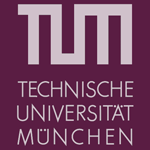Gross Corporate Happiness® Transition Process
“With all variables held at the mean, the conditional probability of surviving (five years after the IPO) … is .70. For a firm with a high level of human resource value, the probability of firm survival increases to .79. For a firm whose human resource value is low, the probability of survival drops to .60.”
T.M. Welbourne / A.O. Andrews, “Predicting the Performance of IPOs”
Academy of Management Journal

What is this about?
Increase your IPO survival probability
by 25%
One of the main reasons for IPOs to fail is their struggle to transit from a “best friends”culture into an efficient organization. Having already grown out of the initial Start-up phase, the strongest link between the team is still the “tribal cohesion” based on mutual trust, human relations and personal attention. Furthermore, freedom of creativity and broad autonomy are recognized as some of the core success factors.
Confronted with investor expectations to meet financial targets, client requirements to achieve pre-specified requirements and delivery commitments and the need to manage an increasing number of colleagues though organizational structures and processes, many key members of the initial team have difficulties to cope with those restrictions and controls and decide to leave.
The Gross Corporate Happiness® Transition Process ensures that the necessary cultural change can happen on the foundations of a full buy-in of ALL key team members, and that the future work domains are shaped in a way that they resonate with the founding culture so that the whole team can actively walk that path of growth.
How does it work?
Embracing the future with the spirit
of the past
First of all, through a well structured process, the timeless purpose and principles of the organization will be jointly carved out. Enabled through intensive storytelling and expressed through unique language, the Purpose, the Values, the Why and the How are able to form the solid foundation for a community that autonomously reaches out into the future and can move motivation beyond the directambitions of the business and re-attach it to its higher right to exist.
In a second phase, the core elements for the future working environment – encompassing the nine Gross Corporate Happiness® domains – will be jointly sculptured in order to shape a highly motivational framework that is able to safeguard the culture of the past. In a final phase, the short and medium term strategic requirements will be jointly reframed in order to be understood as the next logical steps on a journey the whole organization has embarked on.

Finding the Soul
Designing the Space
Reframing the Future
Initiating a Movement
What do you get?
- Clarity about the unique Corporate Soul.
- A common language for its Purpose, Values, Why and How.
- A joint agreement on the future working environment.
- A collective buy-in into the future needs.
- Empowered engagement into the road to grow.









